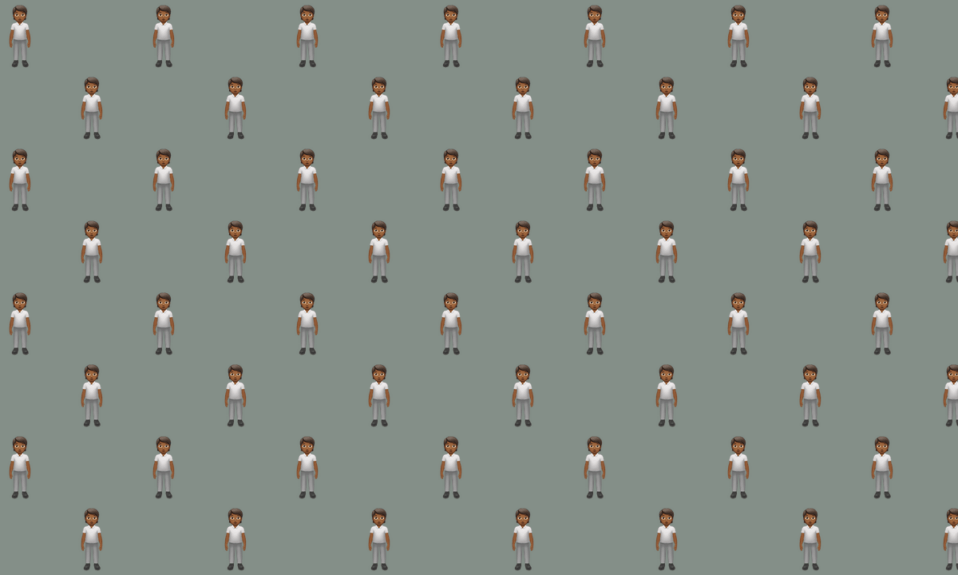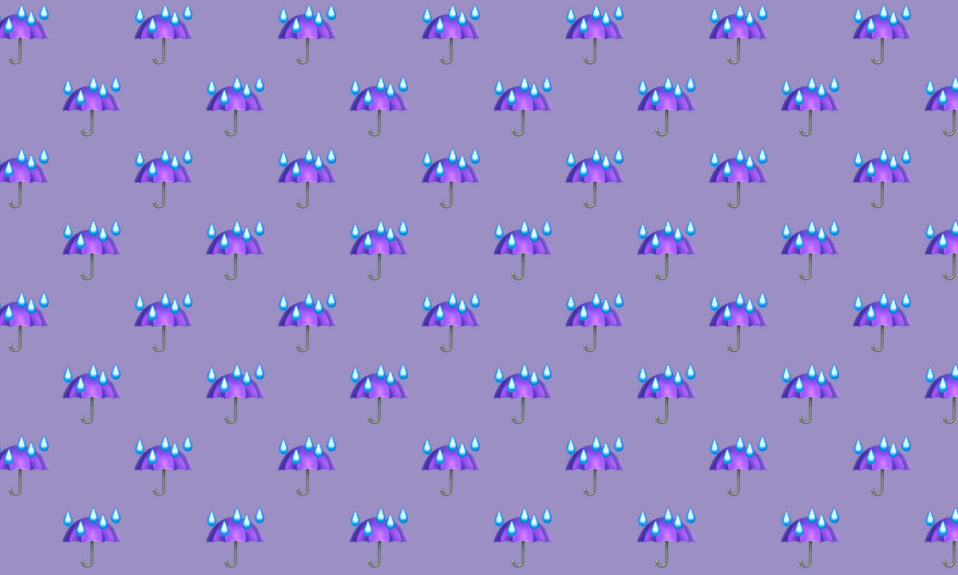What Does 🧍🏾 Person Standing: Medium-Dark Skin Tone Emoji Mean?
The 🧍🏾 person standing: medium-dark skin tone emoji represents a person standing upright with a medium-dark skin tone. It can be used to represent an individual in various contexts. Here are some possible meanings and usage examples of the 🧍🏾 person standing: medium-dark skin tone emoji:
-
Representation of a Person: The 🧍🏾 person standing: medium-dark skin tone emoji is often used to represent a person in general. It can be used to refer to oneself or to describe someone else.
-
Indication of Standing or Waiting: The 🧍🏾 emoji can be used to indicate that someone is standing or waiting for something.
Overall, the 🧍🏾 emoji is a versatile emoji that can be used in various contexts. While it does not have a sexual meaning, it can still be used to convey different emotions and add a fun element to your conversations. So go ahead and use it to express yourself creatively!
🧍🏾 Person Standing: Medium-Dark Skin Tone Design




🧍🏾 Person Standing: Medium-Dark Skin Tone Emoji Meaning From A Girl?
When a girl uses the 🧍🏾 emoji, it typically means:
-
Representation of Herself: The girl may use the 🧍🏾 emoji to represent herself in a text conversation. It can be a way for her to visually depict her presence or to describe her actions or emotions.
-
Indication of Confidence or Strength: The girl might use the 🧍🏾 emoji to convey a sense of confidence or strength. It can symbolize her resilience, determination, or ability to overcome challenges.
-
Celebration of Diversity: The girl may use the 🧍🏾 emoji to celebrate diversity. It can be used to show support for inclusivity and equality, especially when combined with other skin tone variations of the person standing emoji.
-
Expression of Empowerment: The girl might use the 🧍🏾 emoji as a way to express empowerment. It can represent her standing up for herself, her beliefs, or her values.
When replying to a girl who uses the 🧍🏾 emoji, here are some tips:
-
Acknowledge her message: Start by acknowledging her use of the emoji and showing that you understand its meaning in the context of the conversation. This can help create a sense of connection and understanding.
-
Ask for more information: If you’re unsure about the specific meaning behind the emoji or if you want to engage in further conversation, ask her to provide more information or context. This shows active interest and encourages open communication.
-
Mirror her tone: If the girl used the 🧍🏾 emoji in a confident or empowering way, respond with a positive and supportive tone. This helps to maintain the flow of the conversation and encourages further discussion.
-
Share your thoughts: If you have relevant thoughts or experiences related to the topic she expressed with the emoji, feel free to share them. This can help deepen the conversation and create a stronger connection.
-
Use emojis: To add a playful or expressive element to your reply, consider using emojis that complement or mirror her use of the 🧍🏾 emoji. This can make the conversation more engaging and lighthearted.
Here are 5 unique examples of how a girl might use the 🧍🏾 emoji over text:
- “Just finished my workout at the gym, feeling strong and empowered! 🧍🏾♀️💪“
- “I’m standing up for what I believe in, no matter what! 🧍🏾♀️✊“
- “Celebrating our diverse group of friends and the strength of our bond! 🧍🏾♀️🧍🏼♀️🧍🏽♀️🧍🏻♀️❤️“
- “Feeling confident and ready to take on any challenge that comes my way! 🧍🏾♀️💃“
- “Just reached a personal milestone in my career, standing tall and proud! 🧍🏾♀️🎉“
Remember, these examples are just some possible uses of the 🧍🏾 emoji by girls. The specific meaning may vary depending on the individual and the context of the conversation.
🧍🏾 Person Standing: Medium-Dark Skin Tone Emoji Meaning From A Guy?
When a guy uses the 🧍🏾 emoji, it can have similar meanings to when a girl uses it. Here are some possible interpretations of the 🧍🏾 emoji from a guy’s perspective:
-
Representation of Himself: Just like girls, guys may use the 🧍🏾 emoji to represent themselves in a text conversation. It can be a way for them to visually depict their presence or to describe their actions or emotions.
-
Indication of Confidence or Strength: Guys might use the 🧍🏾 emoji to convey a sense of confidence or strength. It can symbolize their resilience, determination, or ability to overcome challenges.
-
Celebration of Diversity: Guys may use the 🧍🏾 emoji to celebrate diversity as well. It can be used to show support for inclusivity and equality, especially when combined with other skin tone variations of the person standing emoji.
-
Expression of Empowerment: Guys might use the 🧍🏾 emoji as a way to express empowerment. It can represent their standing up for themselves, their beliefs, or their values.
While the meanings of the 🧍🏾 emoji can be similar for both guys and girls, it’s important to consider the individual’s personality and the context of the conversation. Guys may have their own unique way of using the emoji, influenced by their personal style and communication style.
When trying to understand the meaning behind a guy’s use of the 🧍🏾 emoji, here are some tips on how to reply:
-
Dive into the Context: Always look at the surrounding text and the mood of the conversation. A guy’s usage of the emoji can vary widely based on these factors.
-
Ask with Curiosity: If you’re uncertain about what he meant, frame your question in a curious manner. For instance, “That person standing emoji caught my attention! What’s the story behind it?”
-
Humor is your Ally: More often than not, the 🧍🏾 emoji is used in a lighthearted or playful way by guys. So, responding with humor or a funny gif can keep the conversation flowing.
Examples of how guys might use the 🧍🏾 emoji over text:
- “Just finished a killer workout at the gym! Feeling pumped and ready to take on the day! 🧍🏾♂️💪“
- “Standing tall and proud after acing that exam! 🧍🏾♂️🎉“
- “Embracing my individuality and celebrating our diverse group of friends! 🧍🏾♂️🌈“
- “No matter what challenges come my way, I’m staying strong and resilient! 🧍🏾♂️💯“
- “Just reached a personal milestone in my career, and I’m standing tall with confidence! 🧍🏾♂️🚀“
Remember, these examples are just some possible uses of the 🧍🏾 emoji by guys. The specific meaning may vary depending on the individual and the context of the conversation. Stay open-minded and embrace the fun and creativity that emojis bring to your interactions!
Does 🧍🏾 Person Standing: Medium-Dark Skin Tone Emoji Have A Hidden Meaning?
The 🧍🏾 emoji does not have a known NSFW or hidden meaning. It is typically used to represent a person standing in a neutral or non-sexual context. It is similar to other person standing emojis, such as 🧍 person standing or 🧍🏻 person standing: light skin tone, but with a medium-dark skin tone. It can be used in conversations related to various topics such as personal achievements, physical accomplishments, diversity, and standing up for one’s beliefs.
Looking For 🧍🏾 Emoji Combos?
Click above to generate some slangs
Related Emojis
Related emojis
🧍🏾 Emoji Codes
| Unicode Code Point(s) | 129485-127998 |
| HTML Dec | 🧍🏾 |
| Hex Code | 1F9CD-1F3FE |
| HTML Hex | 🧍🏾 |
| CSS | 1F9CD 1F3FE |
| C, C++ & Python | u1F9CDu1F3FE |
| Java, JavaScript & JSON | u1F9CDu1F3FE |
| Perl | x{1F9CD} x{1F3FE} |
| PHP & Ruby | u{1F9CD} u{1F3FE} |
🧍🏾 Emoji In Other Languages
| German | :stehende_person_mitteldunkle_hautfarbe: |
| Spanish/Castilian | :persona_de_pie_tono_de_piel_oscuro_medio: |
| French | :personne_debout_peau_mate: |
| Japanese | :立つ人_やや濃い肌色: |
| Korean | :서_있는_사람_진한_갈색_피부: |
| Portuguese | :pessoa_em_pé_pele_morena_escura: |
| Italian | :persona_in_piedi_carnagione_abbastanza_scura: |
| Persian | :آدم_ایستاده_پوست_گندمی: |
| Indonesian/Malay | :orang_berdiri_warna_kulit_gelap-sedang: |
| Mandarin | :站立者_中等深肤色: |



